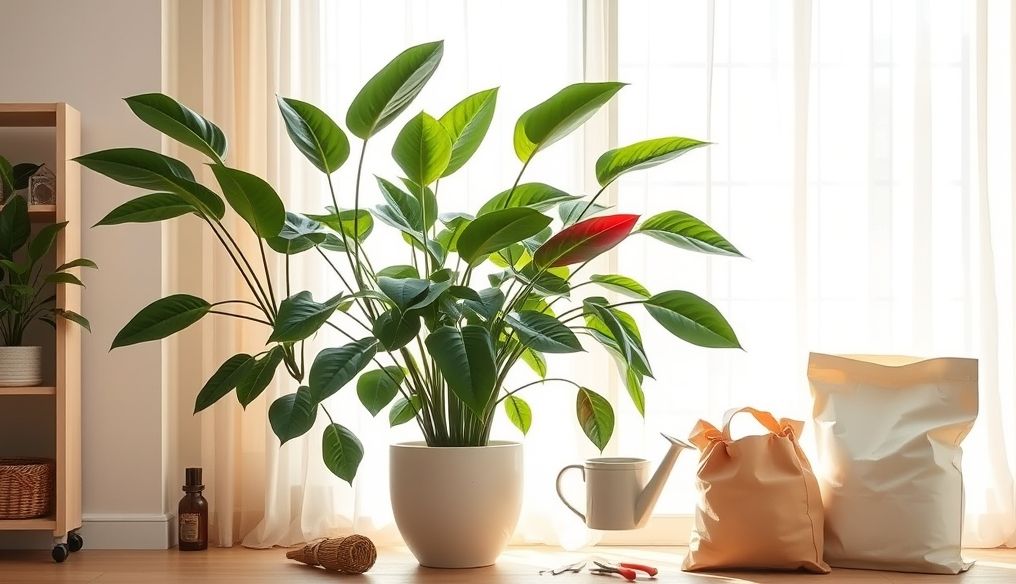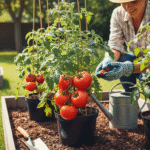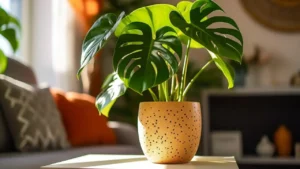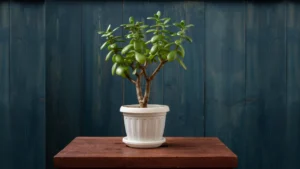Rubber plants (Ficus elastica) are one of the most elegant and resilient houseplants you can grow. With their glossy, deep-green leaves and striking stature, they bring life, sophistication, and a touch of nature indoors. Beyond beauty, rubber plants are natural air purifiers — removing toxins and improving indoor air quality.
Whether you’re a beginner plant parent or a seasoned gardener, this guide will walk you through everything you need to know about growing a healthy rubber plant. From rubber plant light requirements to watering tips, pruning techniques, pest control, and expert insights, you’ll get a complete blueprint for success.
Table of Contents
Rubber Plant Overview
The rubber plant (Ficus elastica) belongs to the fig family (Moraceae) and is native to Southeast Asia. Known for its glossy, leathery leaves that can grow large and lush, this plant has become a favorite choice for indoor spaces and offices around the world.
Rubber plants can grow tall and become striking statement plants, yet they are relatively easy to maintain if you follow proper care techniques. They thrive indoors but can also flourish outdoors in tropical or subtropical climates.
Rubber Plant Quick Care Table
| Feature | Details |
|---|---|
| Scientific Name | Ficus elastica |
| Common Name | Rubber Plant |
| Native Region | Southeast Asia |
| Light Requirements | Bright, indirect light (can tolerate moderate light) |
| Watering Needs | Moderate — allow soil to dry slightly between waterings |
| Propagation | Stem cuttings, air layering |
| Toxicity | Toxic to pets and humans if ingested |
| Growth Rate | Moderate |
| Ideal Temperature | 60–85°F (15–29°C) |
Rubber Plant Requirements Table
| Requirement | Details |
|---|---|
| Hardiness | USDA Zones 10–12 |
| Climate Zones | Tropical and subtropical |
| Plant Type | Evergreen shrub/tree |
| Plant Family | Moraceae |
| Plant Genus | Ficus |
| Season of Interest | All year |
| Height | 6–10 ft indoors (up to 50 ft outdoors) |
| Spread | 2–3 ft indoors |
| Spacing | 3–4 ft apart |
| Depth | Shallow-rooted |
| Maintenance | Low to moderate |
| Soil Type | Well-draining potting mix |
| Soil pH | 6.0–7.5 |
| Soil Drainage | Excellent |
How to Care for a Rubber Plant
1. Rubber Plant Light Requirements
Rubber plants thrive in bright, indirect light. They can tolerate moderate light but may grow slower and develop fewer leaves. Avoid direct sunlight — it can scorch the leaves.
🌿 Pro Gardener Tip: Place your rubber plant near a south-facing window with sheer curtains or near an east-facing window for morning light.
2. Watering Rubber Plant
Overwatering is the most common mistake in rubber plant care. These plants prefer their soil to dry out slightly between waterings. Stick your finger about an inch into the soil — if it feels dry, it’s time to water. Reduce watering in winter when growth slows down.
🌿 Pro Gardener Tip: Use room-temperature water to avoid shocking the plant’s roots.
3. Rubber Plant Soil
Rubber plants prefer a well-draining soil mix. A mixture of potting soil, perlite, and peat moss works best to maintain moisture without waterlogging. Good drainage is crucial to avoid root rot.
4. Best Pot for Rubber Plant
Choose a pot with drainage holes to prevent standing water. A ceramic or clay pot works well because they allow the soil to breathe. Consider a slightly larger pot when repotting to allow room for growth.
5. Repotting Rubber Plant
Repot your rubber plant every 2–3 years or when roots begin to crowd the pot. Spring or early summer is the best time. Gently loosen the roots, prune damaged ones, and refresh the soil.
🌿 Pro Gardener Tip: Avoid disturbing the plant excessively during repotting to minimize stress.
6. Rubber Plant Temperature
These plants thrive in warm conditions — ideally between 60–85°F (15–29°C). Avoid cold drafts or sudden temperature changes.
7. Rubber Plant Humidity Requirement
Rubber plants enjoy moderate humidity. In dry climates or winter months, mist the leaves or use a humidifier to mimic their natural tropical environment.
8. Rubber Plant Pruning
Pruning helps maintain shape and encourages healthy growth. Remove yellowing or damaged leaves and trim stems to control size. Always use clean, sharp pruning shears.
🌿 Pro Gardener Tip: Prune in spring to encourage strong new growth and maintain your plant’s aesthetic.
9. Rubber Plant Fertilizer
Feed your rubber plant with a balanced liquid fertilizer every 4–6 weeks during the growing season (spring and summer). Reduce feeding during fall and winter. Over-fertilizing can damage the roots, so follow the recommended dosage.
10. Rubber Plant Pests and Diseases
Common pests include spider mites, mealybugs, and scale insects. Wipe leaves with a damp cloth and inspect regularly. For infestations, use insecticidal soap or neem oil. Overwatering can cause root rot, while low humidity may lead to leaf drop.
🌿 Pro Gardener Tip: Regularly clean your plant’s leaves to keep pests away and boost photosynthesis.
Conclusion
Caring for a rubber plant is a rewarding journey that adds beauty, elegance, and cleaner air to your home. By following proper rubber plant care tips — understanding its light, water, soil, and pruning needs — you’ll enjoy a thriving plant that can last decades.
Growing a rubber plant indoors is not only a botanical joy but also a way to create a green sanctuary in your home. With patience, observation, and these expert tips, you’ll have a resilient, glossy-leafed companion that enhances your living space.
🌱 Start your rubber plant journey today — and watch your home transform with lush green life and natural charm.











